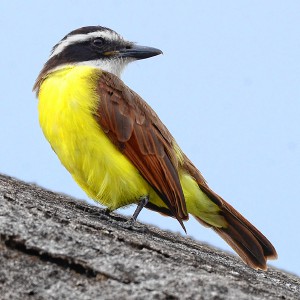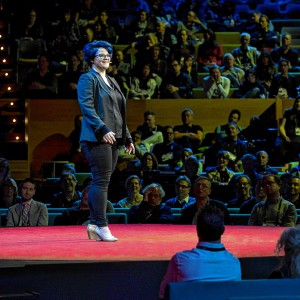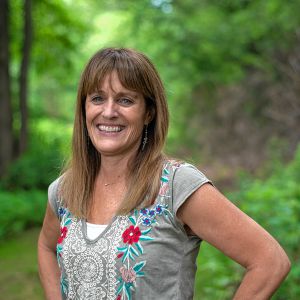Seeing with fresh eyes: In Northampton exhibit, printmakers find inspiration for work following artist residencies
| Published: 01-05-2024 3:32 PM |
Artists find inspiration from a number of sources. Sometimes it comes from simply living and studying outside of home.
In “A Sense of Place,” a new exhibit that marks the reopening of 33 Hawley, the Northampton Community Arts Trust building, several printmakers have combined forces for a group show that’s based on work they developed from spending time in residencies in distant locales, including Italy, France, Denmark, Argentina and Ireland.
Julie Lapping Rivera, the exhibit curator, says taking part in a residency, especially if it’s in another country, gives artists a chance to examine the world through fresh eyes, or to concentrate exclusively on their work once they’re freed up from normal day-to-day responsibilities.
When Rivera, who works primarily with woodcuts and collage, went to Venice in the fall of 2022 for a month-long residency, “I really didn’t have a particular goal in mind in terms of making art,” she said. “The idea was to see what happens, to kind of step outside of my usual practice and comfort zone and look at things differently.
“I had such an amazing experience doing that that I wanted to share the work,” Rivera added. So she reached out to other area printmakers who had taken part in residencies, many of whom she knew from Zea Mays Printmaking in Florence.
The exhibit, which runs through Jan. 28, is displayed in the Mezzanine Gallery at 33 Hawley, on two floor levels near the building’s main entrance. It’s the first exhibit at the arts center since the building has reopened, after being closed for several months in 2023 for final construction.
One of the artists featured in the new exhibit is Liz Chalfin, the founder of Zea Mays. She spent time in Cuba about 10 years ago, primarily in Havana, where she sketched and took photos of the famous sea wall along one part of the city, which abuts the noted Malecón, or esplanade, where many people walk or congregate.
“There’s such a rich history about that place, which can be very public and crowded, or very quiet,” said Chalfin.
Article continues after...
Yesterday's Most Read Articles
Chalfin first created the prints she’s contributed to “A Sense of Place” several years after she’d visited Cuba, constructing the work from her visual memories and her initial graphite drawings and photos.
Her photopolymer intaglio prints consist of several sheets of overlaid paper, creating a kind of hazy panorama that conjures a humid day in the Caribbean, as well as the look of a faded photograph.
“It’s how I explore my memories of my time there,” Chalfin said.
The exhibit showcases a number of printmaking style. B.Z. Reily, who had a residency in 2019 in a historic village in southern France, has created several collage prints that she says were partly inspired by the ancient, narrow streets of the town.
Reily’s prints are also themed around guitars — they’re dedicated to a late friend who was a fine guitarist, she says — and for some she actually used flattened, broken pieces of an old guitar that she glued to a sheet of cardboard, which she then ran through a printing press at Zea Mays.
“When Liz saw that she was like, ‘Oh, no!’ ” Reily said with a laugh.
Rivera, who teaches drawing and printmaking at Smith College, says she used her time in Venice initially to examine the city’s architecture; she also reflected on the city’s canals and its low elevation, making it increasingly vulnerable to flooding in a time of rising seas.
Rivera says she noticed many small sculptures of lions in the city, sometimes carved into the walls of buildings, and she studied the history of Commedia dell’arte, an early form of professional theater that originated in Italy in the 16th and 17th centuries.
“All those ideas and inspirations coalesced over several months after I was home,” said Rivera. “And that inspired me to try something new.”
For instance, she’s created some three-dimensional works that resemble miniature stage sets. “Family Story, Venice” features a background of graceful pillars and arches, as well as a small theatrical backdrop, the kind used in Commedia dell’arte performances.
Set amid this tableau are some finely crafted paper cutouts including a woman holding a baby, a young girl reaching for a door knocker over her head, and a figure wearing a narrow mask over her eyes, like something out of 18th-century theater. Two black lion heads are seen mounted on the background arches.
“I was so taken by the history [of Commedia dell’arte] that I wanted to make that a central part of my work,” said Rivera, who has also created some similarly themed woodcuts and prints for the exhibit.
By contrast, her Smith College colleague, Lindsey Clark-Ryan, the associate chair of the school’s Art Department, has created a series of abstract monotype prints for the show, based on her experience doing a residency in Argentina.
As program notes explain, her installation, called “Fold the world in half at your eye,” uses the horizon “as a starting point to explore the relationship between printmaking, paper, and how we conceive of space.”
Another printmaker, Edda Valborg Sigurðardóttir, grew up in largely treeless Iceland and is fascinated by the horizon. Some of her monotypes evoke the broad views of the landscape there, especially where land meets the sky and sea.
Annie Silverman, a Zea Mays printer who lives in Somerville, lived in Denmark during a residency and has fashioned a series of prints that include images of spoons overlaid across writing from an old Danish history book.
As she explains in exhibit notes, Silverman has been a frequent visitor to Denmark over the years, and while doing her residency bought a set of spoons at a charity shop. Then, moving immediately to a residency in rural Ireland, she made rubbings of the spoons, traced them onto patterned papers, and painted their shapes into the Danish history book.
Conway artist Suzanne Artemieff is also a photographer, and her photopolymer landscape prints offer beautiful, sometimes haunting images of fields, trees and unusual reflected images; she based some of her prints on photos she took out the windows and doors of her home.
She writes that her work focuses in part on finding a balance within “the powerful dynamic between external and internal stimuli.”
“I think all the artists in the exhibit have found a way to show a different way of looking at the world,” said Rivera. “That was our goal.”
There will be an artists’ reception for “A Sense of Place” Jan. 12 from 5-8 p.m. And on Jan. 25th from 7-8 p.m., the gallery will host a poetry reading with members of a writing collective whose work reflects on the theme of “place.”

 Speaking of Nature: Capturing my Bermuda nemesis: The Great Kiskadee nearly evaded me, until I followed its song
Speaking of Nature: Capturing my Bermuda nemesis: The Great Kiskadee nearly evaded me, until I followed its song Easthampton author Emily Nagoski has done the research: It’s OK to love your body
Easthampton author Emily Nagoski has done the research: It’s OK to love your body Earth Matters: Honoring a local hero: After 40 years, Hitchcock Center bids farewell to educator and creative leader, Colleen Kelley
Earth Matters: Honoring a local hero: After 40 years, Hitchcock Center bids farewell to educator and creative leader, Colleen Kelley Valley Bounty: Delivering local food onto students’ plates: Marty’s Local connects farms to businesses
Valley Bounty: Delivering local food onto students’ plates: Marty’s Local connects farms to businesses
